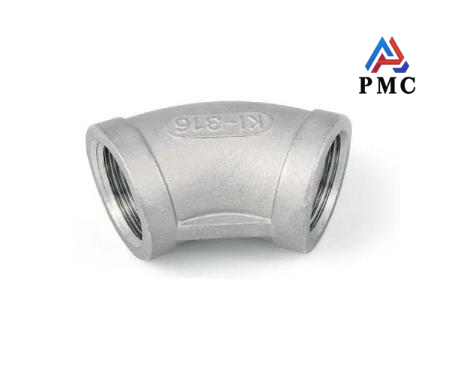
Stainless Steel Elbow Summer Maintenance Guide
Heat and humidity: two major challenges of summer
In summer, high temperature and humidity are the two main challenges facing stainless steel elbows. Under the scorching sun, the ambient temperature often soars, and the fluid temperature in the piping system also rises, which undoubtedly increases the workload of the stainless steel elbows. High temperatures can change the crystal structure of stainless steel and accelerate the diffusion of metal atoms, thereby weakening the strength and hardness of the material. At the same time, rainfall is frequent in summer and the air humidity increases significantly. In a high humidity environment, moisture can easily condense into tiny water droplets on the surface of the stainless steel elbow, forming a layer of water film. When this water film reacts chemically with oxygen, carbon dioxide and other gases in the air, corrosive substances such as carbonic acid are produced, which in turn cause corrosion.
Under the dual effects of high temperature and humidity for a long time, stainless steel elbows may also cause metal fatigue. The constantly changing temperature and humidity will cause thermal stress and wet stress inside the stainless steel. Under the repeated action of these stresses, the microstructure inside the elbow will gradually be damaged and form tiny cracks. Over time, these cracks will continue to expand and eventually lead to the failure of the elbow.
Maintenance tips revealed
1. Regular appearance inspection
Developing a good habit of regularly checking the appearance of stainless steel elbows is the key to discovering potential problems in a timely manner. During each inspection, carefully check whether there is rust on the surface of the elbow. Even extremely small rust spots may be the beginning of corrosion. At the same time, pay attention to whether there are scratches, which will damage the passivation film on the surface of the stainless steel and reduce its corrosion resistance. Also check whether the elbows are deformed, as deformation may affect the normal operation of the pipeline system and even cause safety hazards. Once the above problems are found, corresponding measures should be taken in time. For example, for minor rust spots and scratches, grinding and passivation can be carried out; for severely deformed elbows, replacement should be considered.
2. Gentle Cleansing
When cleaning stainless steel elbows, use a gentle cleaning method. Using a soft cloth and mild detergent, gently wipe the elbow surface to remove dirt and debris. Avoid using cleaners containing chloride ions, as chloride ions will corrode stainless steel and accelerate the damage of the elbow. For stubborn stains that are difficult to remove, you can use a soft-bristled brush to gently scrub, but be careful about the strength and never use hard tools to scratch to avoid damaging the protective layer on the elbow surface.

3. Keep away from corrosive media
Try to keep stainless steel elbows away from contact with highly corrosive media such as acids and alkalis. In industrial production, if it is unavoidable for elbows to come into contact with these corrosive media, effective protective measures must be taken. For example, a corrosion-resistant coating, such as an epoxy resin coating, a polyurethane coating, etc., can be applied on the surface of the elbow. These coatings can form a protective film on the surface of the elbow to prevent the corrosive medium from directly contacting the stainless steel; or a protective cover can be added to the elbow to further enhance its protective ability.
4. Control fluid parameters
Reasonable control of the velocity and temperature of the fluid in the pipeline plays an important role in protecting stainless steel elbows. High-speed fluid will scour the inner wall of the elbow, which may cause wear of the elbow in the long run and reduce its service life; High temperatures will accelerate metal corrosion and fatigue. Therefore, the fluid velocity should be reasonably adjusted according to the material and design requirements of the elbow to avoid high-speed impact; At the same time, ensure that the fluid temperature is within the tolerance range of the elbow to prevent damage to the elbow due to high temperature.
Don’t forget to store and record
1. Proper storage
For stainless steel elbows that are not used temporarily, they must be stored in a dry and ventilated environment, which can effectively reduce the erosion of the elbows by moisture and humid air. At the same time, avoid stacking elbows, as stacking may cause the bottom elbow to be subjected to excessive pressure and thus deform; It is also necessary to prevent the elbows from colliding with each other, as the collision may scratch the passivation film on the surface of the elbows and reduce their corrosion resistance.
2. Maintenance records
It is very necessary to establish detailed maintenance records. Each time the stainless steel elbow is inspected, cleaned, maintained, etc., the relevant information should be recorded, including the operation date, problems found, measures taken, etc.
Read more: Common Standards for Stainless Steel Elbows


